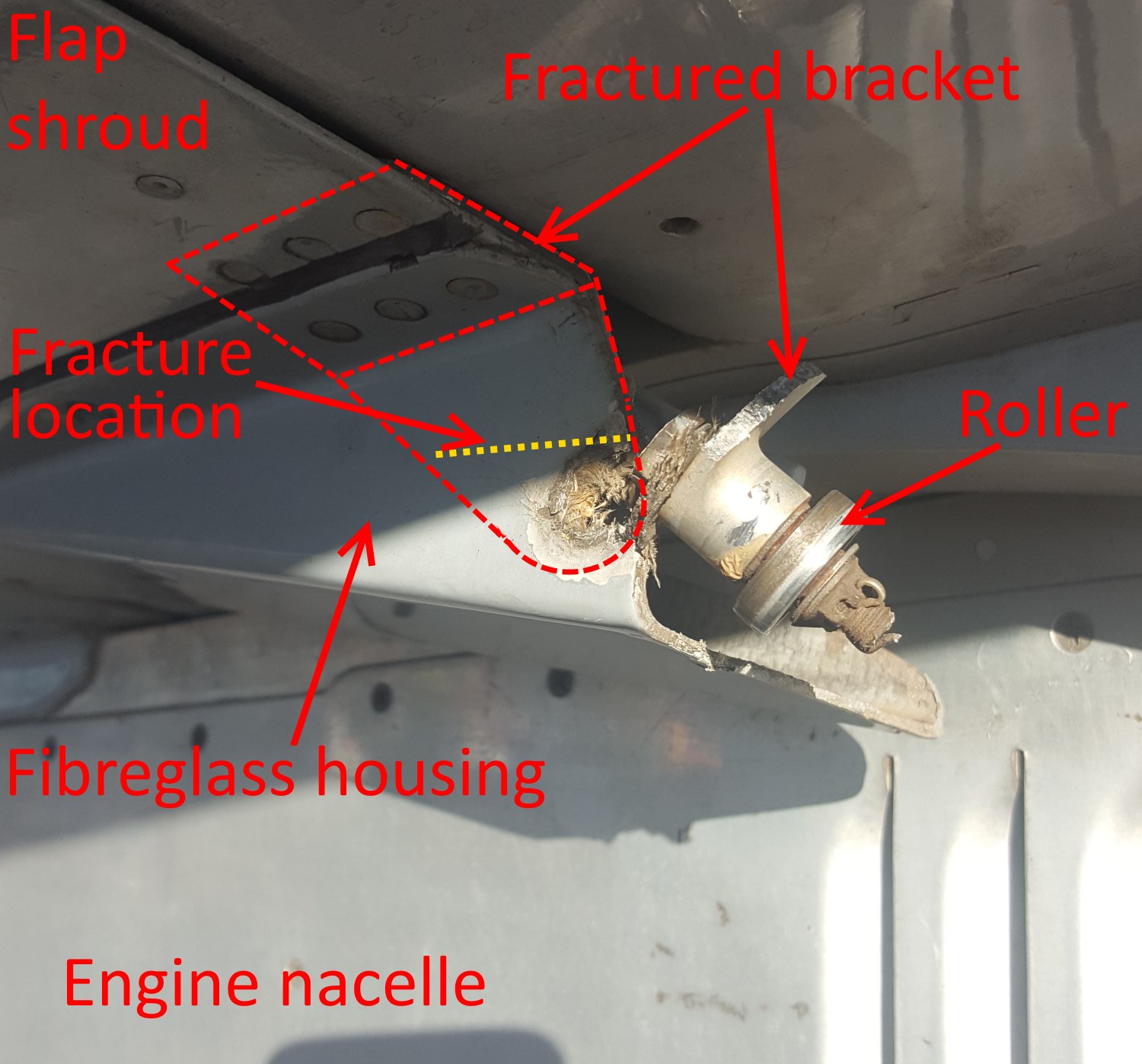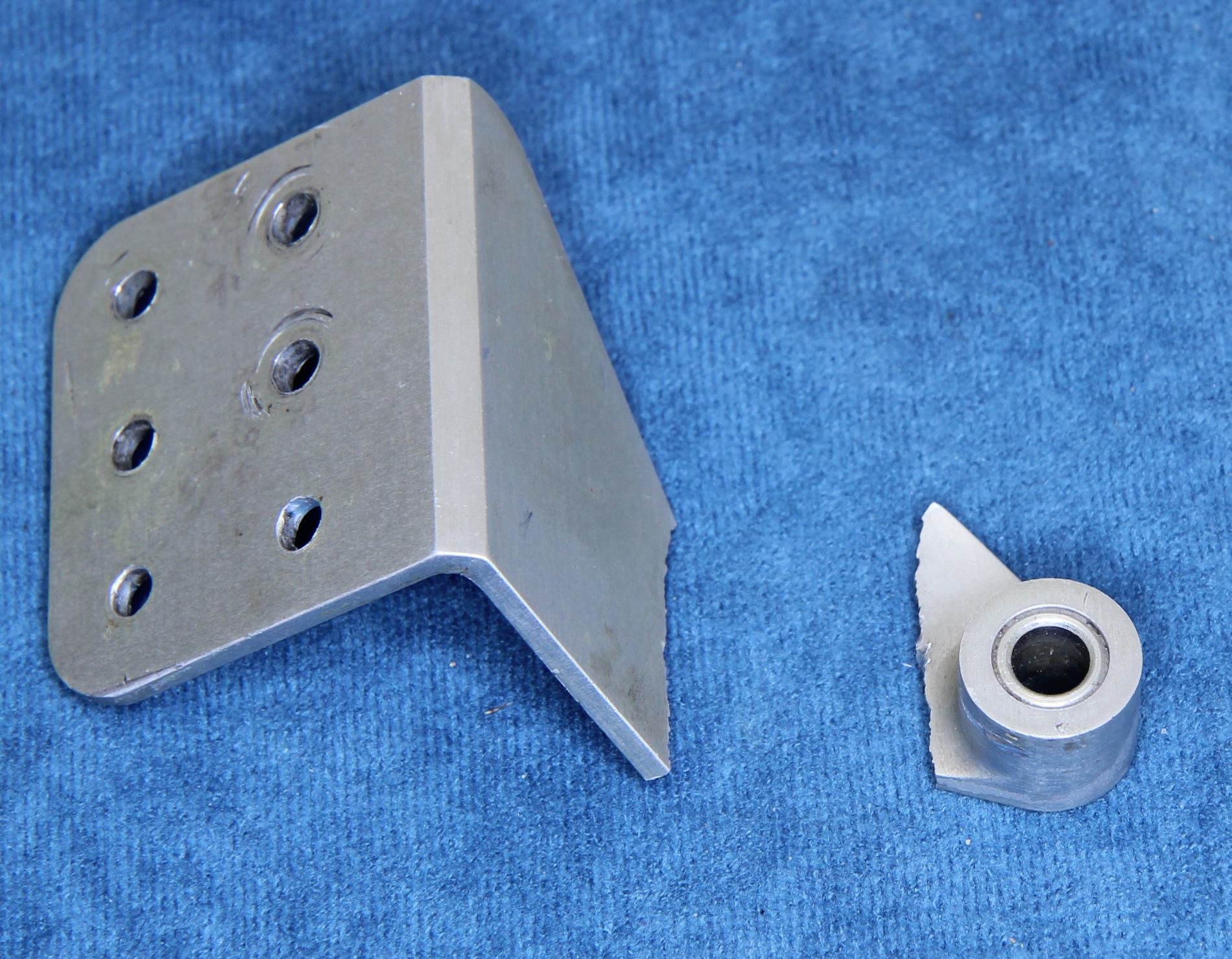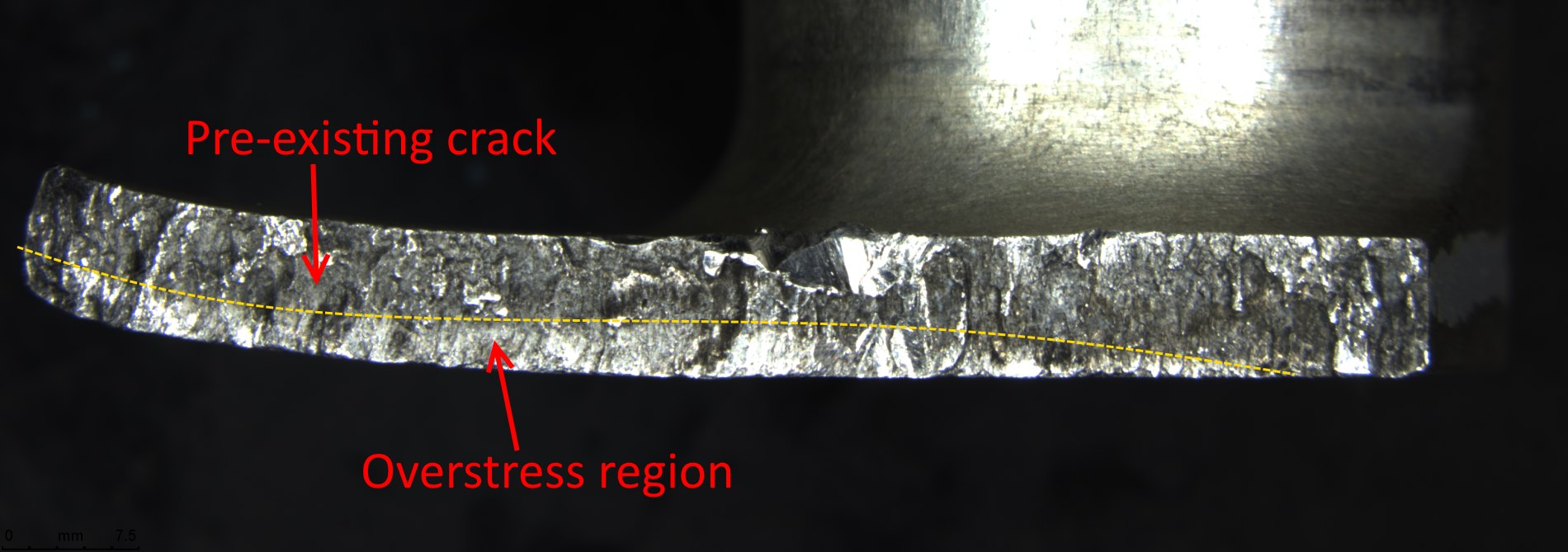What happened
On 25 October 2016, at about 0640 Central Daylight-saving Time (CDT), an Embraer-120 ER aircraft, registered VH-YEI (YEI), departed from Adelaide Airport, South Australia (SA), for a chartered passenger flight to Challenger, SA with 4 crew and 29 passengers on board.
During the initial climb, the pilot attempted to fully retract the flaps (flaps 0) from their take-off position (flaps 15). The crew received a flap disagreement warning from the outboard pair of flaps. The other two pairs of flaps (inboard and nacelle) retracted without issue. A flap disagreement fault is triggered when one flap within a pair is unable to move to its selected position. To prevent wing asymmetry and control issues, the pairing flap will also not move. The crew reported no noticeable aircraft handling or control issues as a result.
The crew contacted air traffic control (ATC) to notify them of the fault and requested a climb to 4,000 ft on their current heading. After levelling off and reducing power to a cruise setting, the crew consulted the quick reference handbook, which advised cycling the flaps to their original position and back again. The fault cleared when the flap control was lowered to 15 degrees but occurred again upon retraction.
The captain and first officer discussed the situation and agreed to return to Adelaide. The crew then informed ATC. The first officer continued flying the aircraft, burning off fuel to reduce landing weight. The captain conducted the landing calculations and determined that they had sufficient runway to land with flaps 15, in case they were unable to deploy further.
During approach, the flaps fully extended (flaps 45) and the aircraft landed without further incident. The flaps were retracted after landing, and all three pairs moved to flaps 0 without the fault reoccurring. The crew visually inspected the flap and immediately identified a damaged bracket and fibreglass shroud.
There were no injuries as a result of the occurrence and the aircraft sustained no damage beyond the fractured bracket and shroud.
Component Failure
The failed bracket secured a roller to the underside of the wing. This roller supported the inboard side of the left-hand outboard flap shroud and was used to guide the flap shroud as it was deployed and retracted. Figure 1 shows failed the bracket, still fixed to the aircraft after it was identified by the flight crew.
The support of the roller pictured was not required for the flaps to actuate. This was apparent after landing, when the flaps were successfully retracted, despite the bracket fracture. It is likely that a portion of the bracket or its fibreglass housing obstructed the flap, preventing it from fully retracting during flight.
Figure 1: Bracket on the aircraft after it had failed. Most of the bracket is obscured by the fibreglass housing. Its outline is shown by the dotted red line.

Source: Flight crew
Figure 2 shows the failed component after it was removed from the aircraft. Figure 3 shows the fracture surface on the smaller of the two fragments. Two distinct regions were visible on the fracture surface. The upper region was tarnished and had likely been exposed to the atmosphere for a longer period of time. It was probable that this was the result of a pre-existing crack, and the stress in the remaining section resulted in failure of the component during normal operation.
Figure 2: The failed bracket after it had been removed from the aircraft.

Source: ATSB
Figure 3: Fracture surface illustrating the pre-existing crack and the overstress region, which fractured when the bracket finally failed.

Source: ATSB
Aircraft Maintenance
YEI was manufactured in 1992 and, at the time of the incident, had accumulated 41,961 hours total time in service. The aircraft was being maintained by a Civil Aviation Safety Regulations (CASR) approved maintenance organisation and the most recent comprehensive inspection was approximately 600 service hours prior, in November 2014. No problems with the outboard flap shroud or bracket were identified at that time.
Similarly, no problems were identified during the more recent line checks and daily inspections. However, the maintainer believes that the location of the bracket and the positioning of the shroud would make it difficult to see any cracks during this type of inspection.
Similar Occurrences
The CASA Service Difficulty Report (SDR) database shows two other reports of unserviceable flaps on EMB-120s. Both involved the left-hand outboard flap, however the fault in both cases was unrelated to the inboard bracket or flap track. Likewise, no reports of issues with this part could be found in the US Federal Aviation Administration (FAA) SDR database.
Safety analysis
A pre-existing crack on a partially concealed bracket propagated to the point where it failed in overstress during normal operation. The origin and age of the crack could not be determined, so it is not known whether there was an opportunity for it to have been detected during a base check conducted in 2014.
As a result of the bracket failure, the left-hand outboard flap could not be fully retracted during climb and a flap disagreement warning occurred. It was unclear exactly how the failed bracket prevented the flap from retracting, but it may have been caused by a bracket fragment physically obstructing the flap.
While there were no adverse control or handling issues, the flight crew returned the aircraft to Adelaide Airport. The flaps extended for landing without any further problems.
All risk controls during this incident worked well. The aircraft’s flap monitoring system identified the misalignment of the outboard flaps and prevented an asymmetry occurring. The crew were then adequately warned of the fault and advised ATC of the situation. The crew followed the quick reference handbook in an attempt to rectify the problem, but when the fault could not be cleared, returned the aircraft to Adelaide Airport. A contingency plan was formulated in the event the flaps could not be extended, but ultimately it was not necessary.
Findings
These findings should not be read as apportioning blame or liability on any organisation or individual.
- Pre-existing cracking and subsequent fracture of a bracket supporting the left, outboard flap shroud prevented the flap from being fully retracted during climb and resulted in a flap disagreement warning.
Safety action
Whether or not the ATSB identifies safety issues in the course of an investigation, relevant organisations may proactively initiate safety action in order to reduce their safety risk. The ATSB has been advised of the following proactive safety action in response to this occurrence.
The Operator
Following the identification of the failed bracket, the operator inspected similar parts on YEI as well as the rest of their Embraer-120 fleet. No further damage or signs of cracking were identified.
Safety message
This incident highlights the importance of comprehensive maintenance inspections in maintaining aircraft airworthiness. However, when technical failures occur in spite of rigorous maintenance procedures, it is important to have adequate risk controls in place, as well as trained crew capable of adjusting plans to account for unforeseen circumstances. In such an event, a positive outcome can be achieved by maintaining composure, planning ahead, and communicating with other crewmembers, ATC.
Part of Aviation Short Investigations Bulletin - Issue 60
Purpose of safety investigationsThe objective of a safety investigation is to enhance transport safety. This is done through:
It is not a function of the ATSB to apportion blame or provide a means for determining liability. At the same time, an investigation report must include factual material of sufficient weight to support the analysis and findings. At all times the ATSB endeavours to balance the use of material that could imply adverse comment with the need to properly explain what happened, and why, in a fair and unbiased manner. The ATSB does not investigate for the purpose of taking administrative, regulatory or criminal action. TerminologyAn explanation of terminology used in ATSB investigation reports is available here. This includes terms such as occurrence, contributing factor, other factor that increased risk, and safety issue. Publishing informationReleased in accordance with section 25 of the Transport Safety Investigation Act 2003 Published by: Australian Transport Safety Bureau © Commonwealth of Australia 2017
Ownership of intellectual property rights in this publication Unless otherwise noted, copyright (and any other intellectual property rights, if any) in this report publication is owned by the Commonwealth of Australia. Creative Commons licence With the exception of the Coat of Arms, ATSB logo, and photos and graphics in which a third party holds copyright, this publication is licensed under a Creative Commons Attribution 3.0 Australia licence. Creative Commons Attribution 3.0 Australia Licence is a standard form licence agreement that allows you to copy, distribute, transmit and adapt this publication provided that you attribute the work. The ATSB’s preference is that you attribute this publication (and any material sourced from it) using the following wording: Source: Australian Transport Safety Bureau Copyright in material obtained from other agencies, private individuals or organisations, belongs to those agencies, individuals or organisations. Where you wish to use their material, you will need to contact them directly. |


